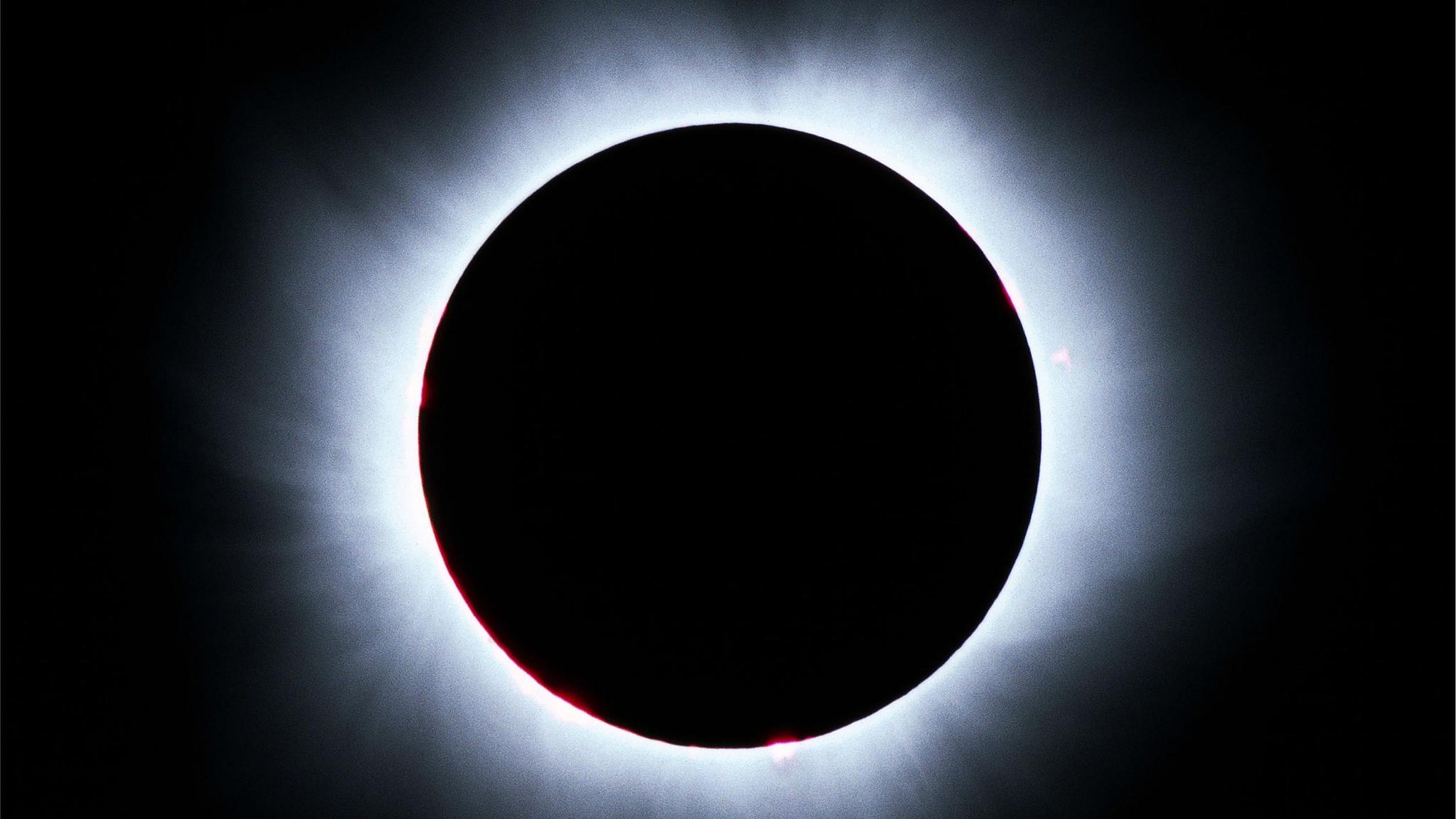The magical moment of totality – the Sun’s corona is visible
The magical moment of totality – the Sun’s corona is visible
No other astronomical event makes humans more aware of the ‘cosmic clockwork’ of our Solar System than a solar eclipse. When the new moon crosses the Sun’s disk and the tip of the shadow cone races across the surface of the Earth, it becomes dark for a few minutes in places over which the umbra passes. Stars are visible in the middle of the day and the environment changes – the animal world becomes restless. This is the only time that the corona, the ring of hot plasma surrounding the Sun, becomes visible, as in this image from the European Southern Observatory of the last total eclipse of the Sun visible in Germany on 11 August 1999.
Austrian writer Adalbert Stifter wrote a very poetic description of the celestial phenomenon about the solar eclipse of 8 June 1842, which he observed in Vienna: “The Moon stood in the centre of the Sun, no longer a black disk, but semi-transparent, as if surrounded by the lustre of steel, with no edge of the Sun around it, but a wonderful, beautiful, glowing circle of blue, red, bursting out in rays, no differently than if the Sun above were pouring its flow of light onto the sphere of the Moon below so that it spattered around – the loveliest thing I have ever seen light do!”

